Navigating the labyrinthine regulations of the UK tax system can often seem a daunting enterprise for artists, whether self-employed or operating within a formal employment structure. With the creative journey bringing its unique set of financial intricacies, understanding the obligations and opportunities provided by HM Revenue and Customs (HMRC) is paramount. The objective of this comprehensive guide is to elucidate the key elements of taxation that are pertinent to artists working in the UK. From registering as self-employed and discerning personal allowances to the vital role of National Insurance contributions, our exploration intends to demystify the fiscal responsibilities that accompany the artist’s pursuit of their craft. Additionally, recognising the nuances between employed and freelance statuses alongside the tax thresholds will serve as a critical foundation for financial proficiency in the artistic realm.
Understanding Taxation for UK Artists
Exploring the Canvas of Tax: What HMRC Expects from UK Artists
Hey there, creative souls! If you’re painting the town red (or any hue from your vibrant palette), staying on top of your tax game is as crucial as nailing that next masterpiece. HMRC – Her Majesty’s Revenue and Customs, for the uninitiated – has a blueprint for folks who breathe art. Let’s delve into the must-dos that keep you and your artistic endeavours in the clear, tax-wise.
First things first, wave goodbye to ignorance about income. Whether your art has people queuing around the block or it’s a hidden gem waiting to be uncovered, if you’re raking in cash from it, HMRC needs to be in the loop. Once your profit – that’s your sales minus expenses – streaks past £1,000 for the tax year, it’s time to register for Self Assessment. This isn’t just for the Lucian Freuds of the world; if you’re selling, you’re in business.
By the way, ‘expenses’ isn’t a cryptic term. We’re talking about all the dosh you splurge on materials, studio hire, exhibition costs, and anything else that’s crucial to cultivating your craft. Be meticulous! Save receipts like they’re sketches from your first art class, because HMRC loves a well-documented paper trail.
Now, if you’re wondering about VAT (Value Added Tax), remember this: Not every artist needs to tangle with it. Only if your sales go beyond £85,000 in a year do you need to register. For most of us spinning creativity into coin, that’s a speck on the horizon. But keep an eye on those figures – you wouldn’t want a tax surprise ruining your flow.
Here’s something uplifting: HMRC isn’t a soulless machine. They understand that the struggles of an artist can be as real as the paint on your palette. If you’re not making bank yet, they give you a break. It’s called Trading Allowance, and it lets you earn up to £1,000 tax-free each year. Yes, my friend, it’s a little bit of sunshine from the tax gods themselves.
And for those who strike gold, remember, paying Income Tax is part of the gig. It’s like the shadow in your still life – essential for balance. Once you cross the Personal Allowance threshold (that’s £12,570, by the way), part of your income needs to be shared with the taxman. It’s progressive, though, so as your sales soar, so does the slice of tax you contribute.
Finally, National Insurance Contributions, or NICs. These kick in when your profits go above £6,515. It’s your backstage pass to the benefits system, giving you coverage for the unexpected solos life might throw at you.
So there you have it, the quickfire lowdown on what HMRC expects from artists in the UK. Having your tax affairs sorted lets your creativity run wild without the nagging thought of tax trouble. Keep your finances as flawless as your art, and voila – you’re all set to be the talk of the town (without HMRC stealing the spotlight!).
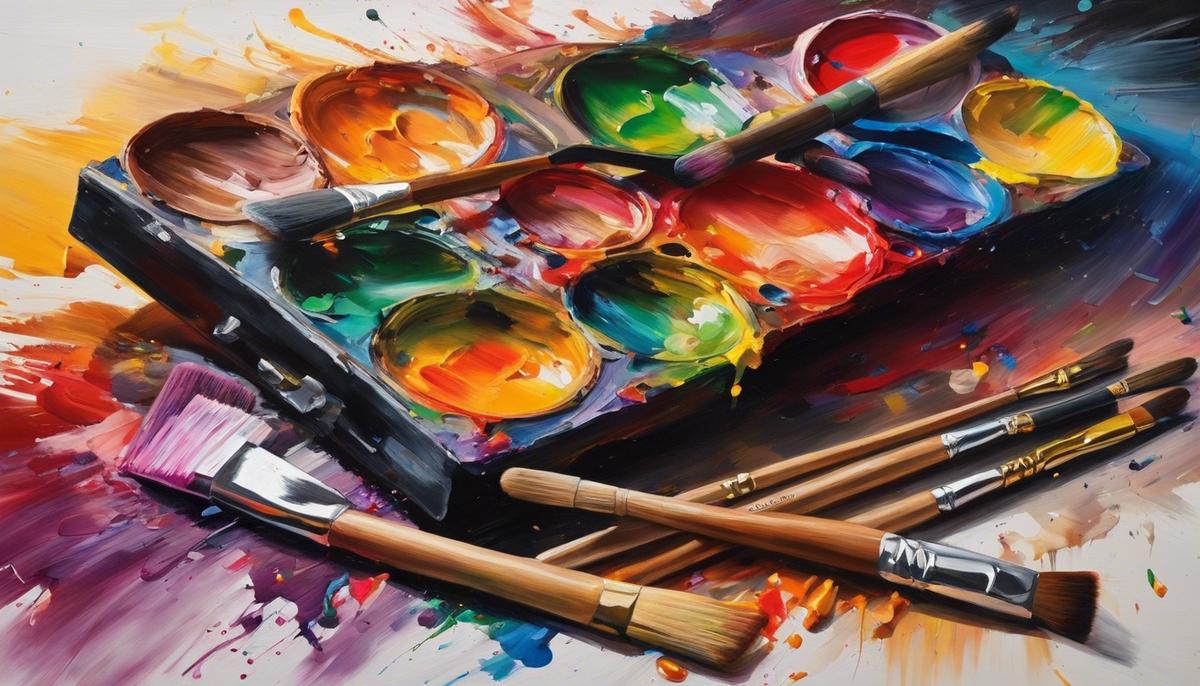
Navigating Deductible Expenses
Diving into the world of creative hustle, UK artists navigate a labyrinth of costs as they sculpt, paint, and innovate their way to success. Whilst crafting masterpieces, it’s paramount to keep a keen eye on the finances. After all, every smart artist knows that managing expenses is an art form in itself.
Your studio is your sanctuary, but it also doubles up as a business expense. Whether it’s a corner of your apartment or a spacious loft, rent and utilities are like paint to a canvas: necessary expenses that capture the reality of the trade. Don’t overlook the equipment either; easels, brushes, cameras, computers – they’re not just tools, they’re investment pieces you can claim against your earnings.
Let’s talk materials. From the highest quality oil paints to the most delicate charcoals, these are the lifeblood of any creation. The good news? They’re deductible! Just like an artist wouldn’t limit their palette, don’t hesitate to account for every sheet, tube, and stick that goes into your work.
But creation isn’t confined to the studio. Travelling for inspiration or to showcase work? Mileage, train tickets, even international airfares could be part of your allowable expenses. And when you dine with a client or grab a coffee while discussing a collaboration, remember – it’s not just a meal, it’s a business meeting.
Professional development is as essential as your next masterpiece. Subscriptions to art journals, fees for courses to perfect your craft, memberships to artist guilds – they aren’t just educational, they’re vital and often deductible costs that keep the wings of creativity soaring.
What about those peculiar items, the ones specific to a project? Say no more, those can often join the list of deductions as well. Keeping a tight record of these quirky, one-off expenses ensures they won’t fly under the radar come tax time.
Insurance, the unsung hero of the art world, often slips through the cracks amidst the excitement of creation. Yet, whether it’s for your studio, artwork, or even public liability, it’s not just prudent; it’s a non-negotiable stroke of fiscal responsibility. And yes, it’s typically an expense you can wave goodbye to from your taxable income.
Finally, let’s not forget advertising and marketing costs. Flyers, business cards, digital ads, website maintenance – getting your art out there is as vital as the art itself – and typically claimable as a business expense.
Artists, while your passion may be for the visual, don’t let numbers daunt you. Keep every receipt, note every cost – your craft deserves the diligence. Armed with knowledge and wise expense management, your financial canvas can be just as impressive as the ones you paint, sketch, or mold.
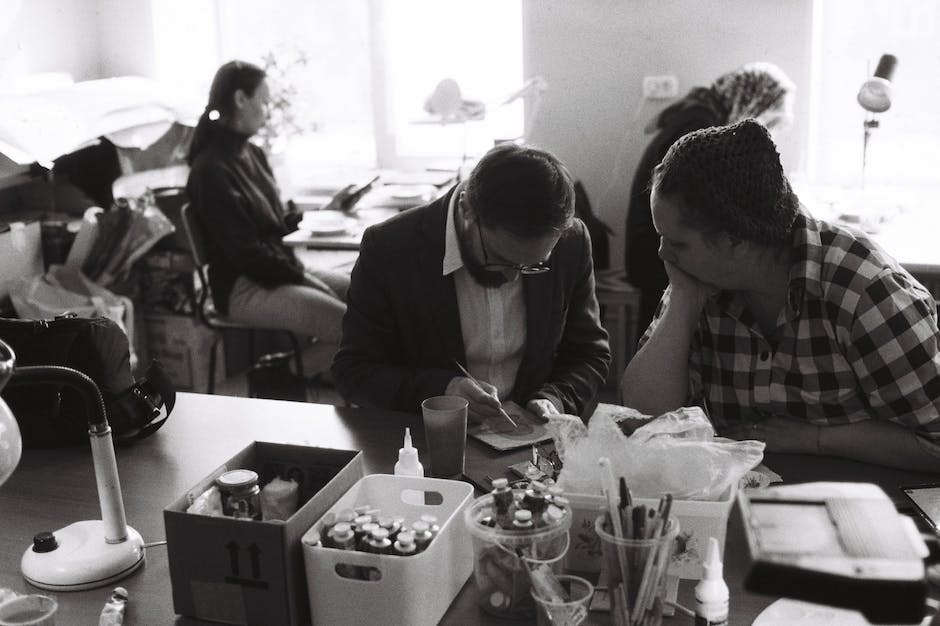
VAT for Artists
Ah, the vibrant world of art! Artists traipse through a tapestry of creative endeavours and, in the bustling city of London, there’s always a fresh scene to explore.
However, amid the chaos of creation, the dreary topic of Value Added Tax (VAT) registration beckons. Let’s paint a clear picture of when an artist should consider joining the VAT ranks in the UK.
First off, let’s talk brass tacks – the VAT threshold. If an artist’s taxable turnover in any rolling 12-month period hits the mark of £85,000 or more, then it’s time to register for VAT. This isn’t just your paintings and sculptures, mind you; it includes everything: workshops, lectures, commissions… the lot. Ignore this, and you might find yourself in a sticky wicket with Her Majesty’s Revenue and Customs (HMRC).
Now, just because you’re not at the threshold now doesn’t mean you should shove this info into your drawer of forgotten charcoal stubs. Voluntary registration has its perks, like reclaiming VAT on supplies, and could be a savvy move for artists planning to expand their practice.
But here’s the twist, register for VAT, and you’ll need to charge VAT on your artwork and services – that’s an additional 20% your buyers will have to pay. This might make your artwork more expensive, potentially impacting sales, so weigh this decision with the care you’d put into mixing the perfect hue.
And another blotch to consider – the VAT Flat Rate Scheme could be a masterpiece for some. It simplifies the process, as you pay a fixed rate of VAT to HMRC. But crunch those numbers, because what works for a digital artist churning out prints might not suit a sculptor wrestling with giant marble blocks.
As the sun sets on our VAT discourse, remember, the financial side of art isn’t just a necessary evil. With a bit of savvy, it can be woven into the eclectic tapestry of artistry. Keeping an analytical eye on finances can ensure the longevity of the passionate adventures in the art world, even if that means deliberating over tax as much as tone and texture.
End.
Deadlines and Penalties
Dive right into the heart of London’s buzzing art scene, and you’ll find that even amidst the chaos of colour and creativity, there’s one thing every artist must face: the stern eye of Her Majesty’s Revenue and Customs (HMRC). To keep the art flowing and the tax woes at bay, there are some pretty essential deadlines as well as penalties artists should watch out for.
Now, before panic sets in, let’s tackle the big one: the Self Assessment tax return deadline. January 31st is engraved in the minds of many, as it’s the day the previous tax year’s online submissions are due. Miss it, and there’s an immediate £100 penalty. But the sting doesn’t end there; after three months, daily penalties of £10 kick in, going up to £900! Artists gotta keep their eyes on the prize and the calendar!
For any creative cashing in on the festive season, the Payment on Account—basically an advance payment towards next year’s tax bill—is another not-to-be-missed date. The first instalment is due on January 31st, and the second on July 31st. It’s like buying art supplies: you’ve got to pay upfront to keep creating without hiccups!
Artists with their profits soaring high, above the VAT threshold, remember: there’s a 30-day window to register with HMRC. If not, it’s penalty time, and the amount depends on just how late the registration is. It’s also wise to note that failing to file a VAT return or cough up the due tax amount could result in a nasty penalty based on the unpaid tax. No one wants to give away more of their hard-earned cash, right?
Finally, class, don’t forget the 22nd of the month. If you’re paying VAT or PAYE for employees through the banking system, keep in mind, the HMRC must have the moolah by this date.
Managing finances might not be as thrilling as splashing paint on a canvas or shaping a wild idea into something tangible, but it’s crucial for keeping the spirit of art alive and thriving. Stay punctual, stay creative, and most importantly, stay out of tax trouble! It’s the London art student’s way to keep the adventure going without those avoidable financial woes. Keep these dates as a part of your toolkit, just like your favourite brush or lens, and paint your career masterpiece without a tax blunder smudge.
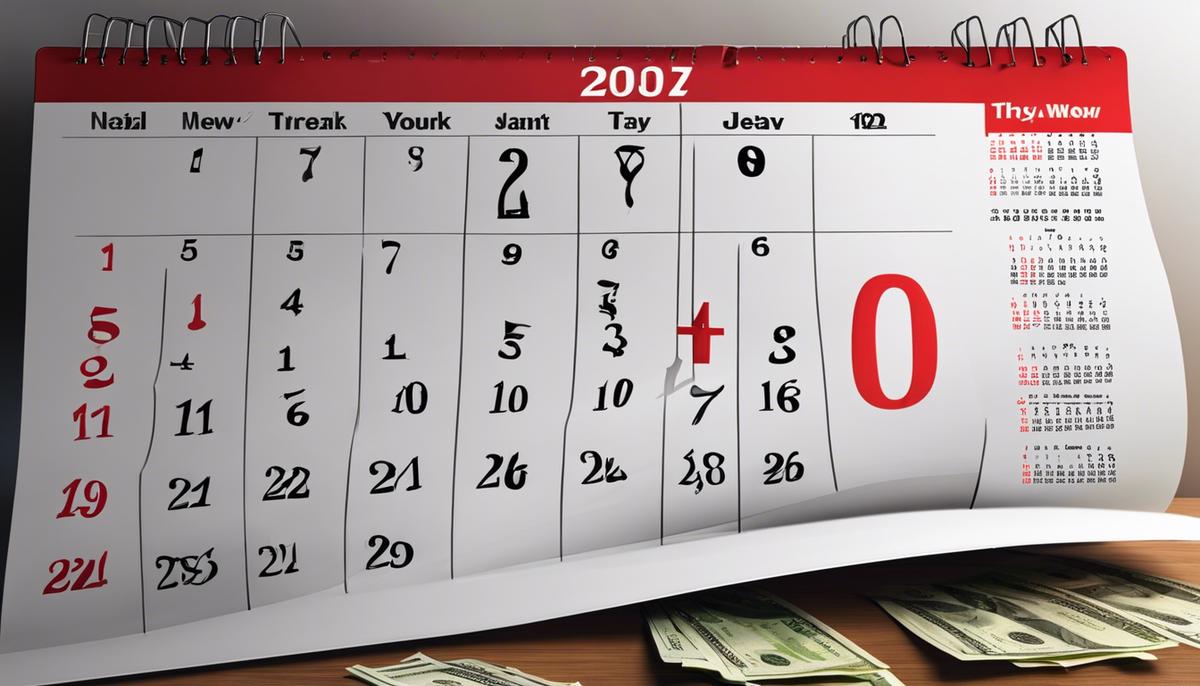
Utilising Tax Reliefs and Allowances
The Canvas of Tax Efficiencies: Seizing the Creative Sector Tax Reliefs
Amidst the vibrant hues of creativity and the deep strokes of artistic expression lies the stark canvas of taxation – but fear not, artists of the UK! The tax easel presents opportunities to master the financial landscape with reliefs and allowances that are specific to your craft. Let’s delve into the untapped potential of tax reliefs that can sustain your artistic journey.
First off, did you know that artists can dance to the rhythm of the Research and Development (R&D) tax credits? That’s right, the government encourages innovation and if you’re experimenting with new techniques or materials, you might be eligible for a cut on your taxes. Innovative minds in crafting new experiences need to check this out – it’s like having a patron for your modern-day masterpiece!
Next, get your palette ready for the Creative Industry Tax Reliefs (CITR). These come as a suite of incentives geared towards qualifying artistic fields, including film, animation, high-end television, and video games. If you’re weaving narratives in any of these areas, CITRs can substantially reduce production costs. Make sure to check the eligibility criteria – it might just be the financial plot twist your project needs!
And ever heard of Artists’ Resale Right (ARR)? When original artwork goes under the hammer for the second or subsequent time, the artist can claim royalties. It’s your continuing link to the artwork’s economic value, like a silent symphony that plays every time your piece finds a new aficionado.
What about tax deductions for donations or exhibited works? If you’re one to paint the town philanthropic, you can donate works to UK public collections under the Cultural Gifts Scheme or the Acceptance in Lieu (AIL) program. Not only do you entrench your legacy in the annals of cultural heritage, but you also score tax reductions. Charitable interests mesh beautifully with art’s benevolent spirit and the tax system supports that!
For the guiding stars in the art constellation, let’s take a peek at the Enterprise Investment Scheme (EIS) and Seed Enterprise Investment Scheme (SEIS). If you’re setting up an enterprise in the creative domain, these schemes offer tax reliefs to investors backing your artistic venture. That means attracting patrons is not only a matter of prestige but also one of practical perks!
Lastly, we cannot overlook the role of Council Tax. If part of your home serves as a studio, there could be scope for a reduction or exemption, depending on how the space is used. A tete-a-tete with your local council can clarify if you can chip away at this expense – potentially a saving grace for home-based creatives.
So there you have it – a palette of tax reliefs and allowances awaits artists willing to blend astute financial management with their creative aspirations. Dive into the finer details, navigate the eligibility channels, and you may find your art not just enriching souls but also nurturing your financial well-being. Paint your path with the wisdom of tax smarts, and the art world, both aesthetic and economic, is your oyster!
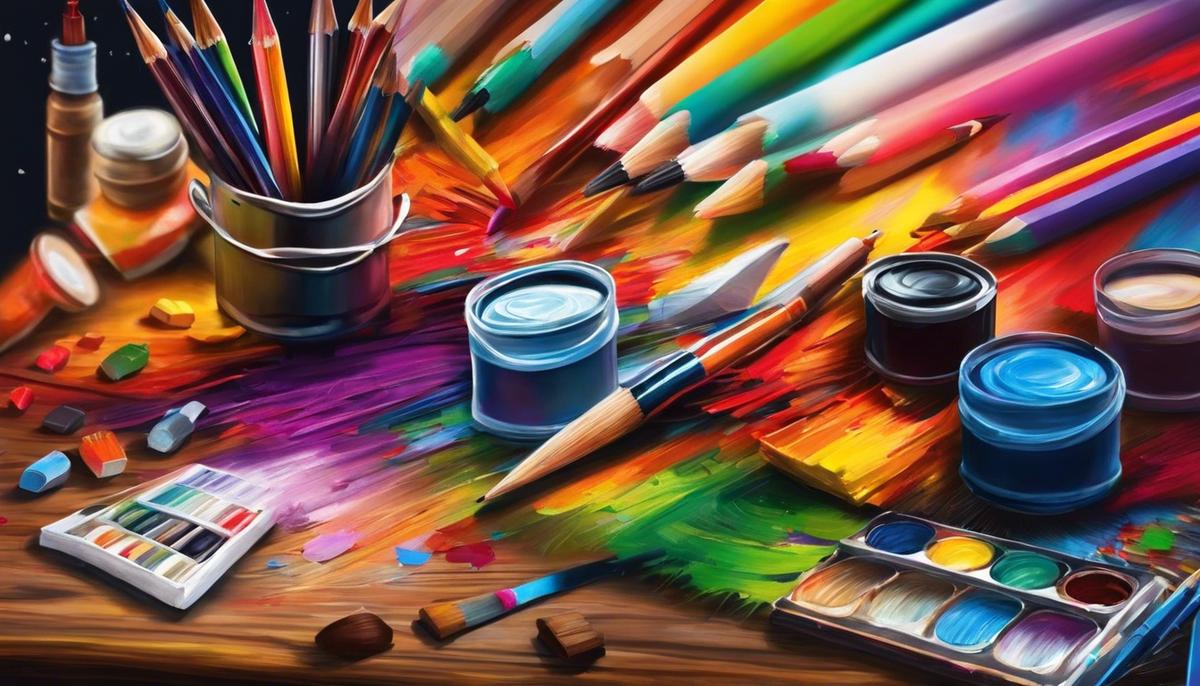
Professional Help and Resources
Embarking on the creative journey through the bustling and ever-changing art scene of London summons not only a flare for the innovative but a savvy approach to the often-overlooked world of finances. UK artists, entwined with canvas and colors or immersed in digital dimensions, face a tax labyrinth that can stifle even the most free-spirited endeavors.
Tangled within the realm of tax is a vital lifeline, one worth grasping: professional tax advice. The reason? Simple: to save on taxes, to stay within the legal tapestry, and to secure those financial threads that keep the artistic engines running smoothly.
Let’s brush away the excess and focus on the brilliance of tax wisdom. With a professional guiding the palette knife, artists can optimize their monetary masterpieces. Say goodbye to splotchy financial records and hello to streamlined efficiency where every stroke of expense is accounted for, every shade of income is painted in clarity, giving life to a future as bright as their boldest pigment.
Experts translate tax jargon into strokes artists comprehend. When intangible concepts like ‘capital allowances’ and ‘profit computations’ break through the creative barrier, artists gain the power to strategize. It’s not about constraining creativity but about providing a canvas where financial and creative goals are equally prioritized.
The resources, oh, they’re there like galleries waiting to be discovered. From accounting firms offering specialized services for creatives to online platforms breaking down tax advice into bite-sized nuggets palatable for the artistic mind. Artists can access HM Revenue and Customs (HMRC) workshops, tailored guidance, and even software geared toward the freelancer’s fluctuating financial flow.
Consider local art councils or associations, which often have partnerships with tax advisors understanding the nuances of an artist’s financial tapestry. They’re like the art critics who’ve seen it all – they know the quirks, the highlights, the potential – and they have the gusto to ensure that the financial portfolio is as impressive as the galleries showcasing their work.
In closing, remember, professional tax advice isn’t just a mundane detail in the narrative of an artist’s life. It’s a secret passage to sustainable creativity. It’s the knowledge that transforms confusing numbers and regulations into a composition as stunning as the artwork itself, a symphony of practicality and imagination, resonating within the balance sheets.
Now, go forth, empower that artistic essence with fiscal finesse, and let the splendor of art and the acumen of finance flow in perfect harmony.
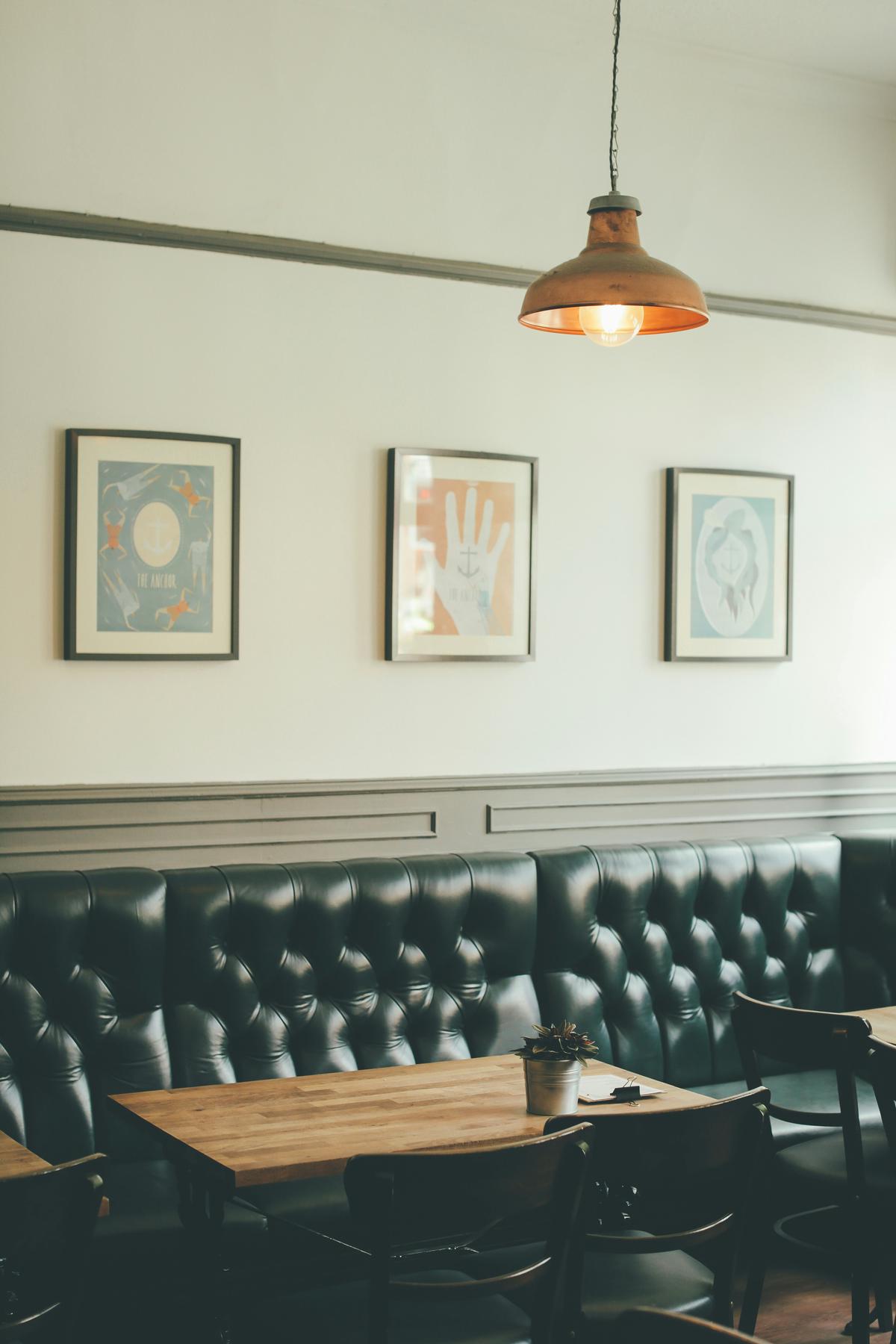
Photo by anchorcoffee on Unsplash
The journey through the tax landscape for UK artists requires patience, attention to detail, and an eagerness to engage with the available resources and professional expertise. With a clear understanding of deductible expenses, VAT intricacies, beneficial reliefs, allowances, and statutory deadlines, artists can forge a path towards tax compliance with confidence. Armed with this knowledge, the aim is for the artist not only to fulfill their tax obligations but also to optimize their financial health and sustain their creative endeavors. While the artistic path is seldom linear, being well-informed with regard to taxation can establish a stable foundation upon which the artistry can flourish uninhibited by fiscal uncertainty.


























